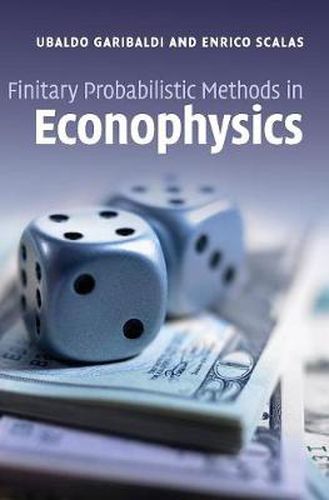Readings Newsletter
Become a Readings Member to make your shopping experience even easier.
Sign in or sign up for free!
You’re not far away from qualifying for FREE standard shipping within Australia
You’ve qualified for FREE standard shipping within Australia
The cart is loading…






Econophysics applies the methodology of physics to the study of economics. However, whilst physicists have good understanding of statistical physics, they may be unfamiliar with recent advances in statistical conjectures, including Bayesian and predictive methods. Equally, economists with knowledge of probabilities do not have a background in statistical physics and agent-based models. Proposing a unified view for a dynamic probabilistic approach, this book is useful for advanced undergraduate and graduate students as well as researchers in physics, economics and finance. The book takes a finitary approach to the subject, discussing the essentials of applied probability, and covering finite Markov chain theory and its applications to real systems. Each chapter ends with a summary, suggestions for further reading, and exercises with solutions at the end of the book.
$9.00 standard shipping within Australia
FREE standard shipping within Australia for orders over $100.00
Express & International shipping calculated at checkout
Econophysics applies the methodology of physics to the study of economics. However, whilst physicists have good understanding of statistical physics, they may be unfamiliar with recent advances in statistical conjectures, including Bayesian and predictive methods. Equally, economists with knowledge of probabilities do not have a background in statistical physics and agent-based models. Proposing a unified view for a dynamic probabilistic approach, this book is useful for advanced undergraduate and graduate students as well as researchers in physics, economics and finance. The book takes a finitary approach to the subject, discussing the essentials of applied probability, and covering finite Markov chain theory and its applications to real systems. Each chapter ends with a summary, suggestions for further reading, and exercises with solutions at the end of the book.